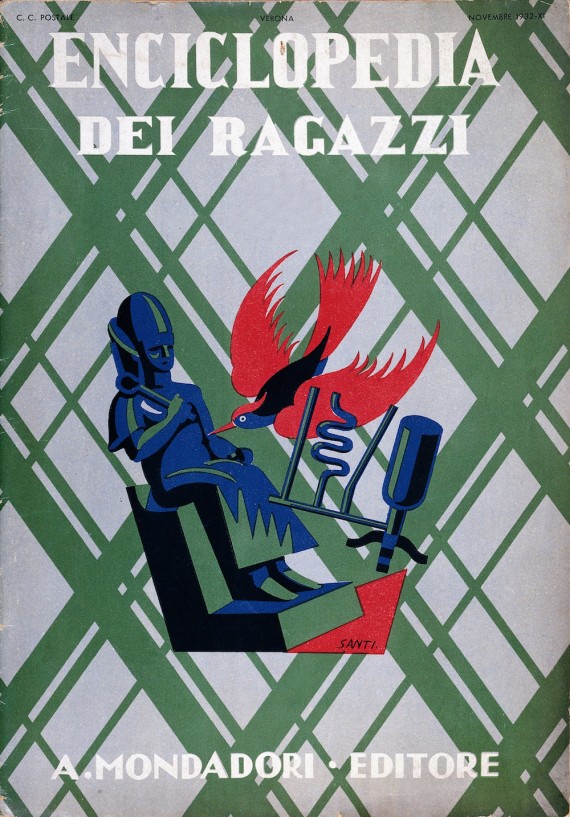1922
Launch of Enciclopedia dei Ragazzi Mondadori.

Satisfy the curiosity for knowledge: the Enciclopedia dei Ragazzi
“You will find berries, herbs, ferns, minerals, tapestries, trains, maps showing international borders, rivers, mountains and oceans, but also the lives of animals and plants from every country, together with the most famous industries from every region”.
This was the introduction of the Enciclopedia dei Ragazzi, an editorial adventure undertaken by Mondadori in 1921. It began with Arnoldo buying from Cogliatti, a small publisher from Milan, the property rights for the Children's Encyclopedia by Arthur Mee. This work, published between 1911 and 1913, received a warm welcome from the public. Nevertheless, the revenues were just sufficient to cover the costs.
Mondadori cautiously kept the serialized publication until 1926. Only after that date will all six volumes be published, they will become 12 in 1930, with an average circulation of 5,000 copies. After the war, the Enciclopedia, which had already become a classic of Italian children’s literature, was constantly reprinted.
With a big format, published in two different editions, one of which with a luxury style, the Enciclopedia looked similar to a book for adults. However, it distinguished itself for its number of illustrations, the text formatted in two columns, and the numerous coloured charts, and above all for its design. The topics were expressed as “notions” and grouped in twenty-four big areas, called “Books”.
History, geography, music, literature and science were accompanied by other subjects. There were “The Book of Human Gains”, dedicated to scientific discoveries and inventions, the “Book of Famous Books”, which had summaries and bits of classic literature made accessible for kids, the “Book of Hobbies”, which taught readers how to build games with paper and other materials. And, most loved above all the others, there was the “Book of Why?” that answered random questions such as: Why do we cry? Why do we dream? Why doesn’t the Leaning Tower of Pisa not fall down even though it is so slanted?